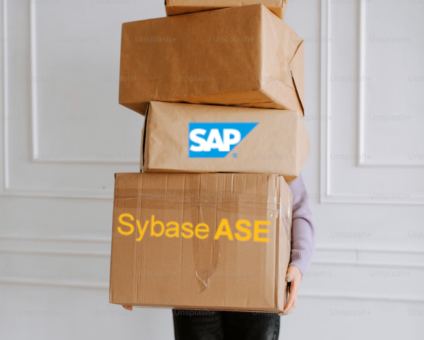Beyond the Hype: What Retailers Really Want from Tech in 2025 Europe’s biggest retail conference …
![]()
Cloud-native POS platform for seamless omnichannel customer experience.
![]()
A single hub for all promotions campaigns.
- Omnichannel ExperienceCreate seamless customer experiences
- Device IndependencePOS agnostic to form factor or operating system
- Self-CheckoutDo more with fewer associates
- Mobile StoreLeverage POS from anywhere
- POS on the GoEnable associates to sell outside of the store
- Unified PromotionsStreamline and simplify promotion workflows
- CX ConnectAllow customers to engage with POS during checkout
- Composable CommerceCreate the store experience you want
![]()
The most advanced synchronization solution for databases and file systems.
![]()
Data configuration and batch automation across different disparate systems and vendors.
-
Data Replication
- Multi-tier DistributionReplicate thousands of remote locations
- Cloud Database ReplicationCapture live changes from on-premise to the cloud
- High Availability and Load BalancingEnsure 24/7 access to data and scale efficiently with demand
- Analytics and ReportingCapture the whole picture with real-time reporting
- Multi-masterMaintain consistency of data in a peer to peer setup
- Data WarehouseReplicate live and historical data to a warehouse
- MigrationsConduct live data migration with no downtime
-
-
Data Integration
- Master Data ManagementChanges propagate across the entire system, allowing you to maintain a centralized view of all parts of your core business entities.
- Application IntegrationReduce dependencies, complexity, and risk to build a high-performance, data-driven application.
- Web ServicesIntegrate multiple systems using web services or build a business application using a service-oriented architecture.
- Data WarehouseIntegrate disparate data from multiple systems so you can transform data for better business intelligence and reporting.
- Data MigrationConduct live data migration during critical server replacements, storage upgrades, and data center relocations—with no downtime.
- ImplementationIntegration consultants help design, develop, and deploy an implementation of our products.
- DevelopmentThe product developers can add features, enhance existing functionality or build support for new platforms.
- TrainingEngage our experienced training resources to gain in-house knowledge and expertise on Jumpmind products.
- SupportLeverage product engineers to resolve issues, fix defects and provide updates or patches.
- Proof of ConceptDetermine the feasibility of implementing our products and get answers to your questions quickly.
What a fun week it was for women from across the country who came together …
It’s a wrap for the Jumpmind Team at Shoptalk Spring and we could not have …
View all Blog Posts
The new release of SymmetricDS Pro 3.16 data replication software simplifies setup, improves performance, and …
Sybase ASE (more recently known as SAP Adaptive Server Enterprise), announced its end of mainstream …
Azure Blob Storage has become a popular option for storing files in the cloud. And …
View all Blog Posts
Jumpmind Powers Point of Sale and Promotions Execution for Landmark Retail, One of the Largest …
Retail Technology Leader Jumpmind to Enable Mobile Point of Sale and Inventory Management for DTLR/VILLA …
The retailer is charting its next chapter with retail technology modernization to power inspired omnichannel …
View all Customer Stories
43 percent say handling online order returns in-store is a top challenge, and that increases …
After nearly a century in business, the legendary Canadian fashion retailer is retooling to streamline …
The Solution Addresses Modern Retail Challenges with Innovative Promotions to Captivate Inflation-Weary Shoppers NRF 2024, …
View all Blog Posts
![]()
Cloud-native POS platform for seamless omnichannel customer experience.
![]()
A single hub for all promotions campaigns.
![]()
The most advanced synchronization solution for databases and file systems.
![]()
Data configuration and batch automation across different disparate systems and vendors.
-
Data Replication
-
-
Data Integration
-
Retail Retail trends, technology, and enhancing the customer experience
-
Data Thoughts on data matters, dialects, performance, and security
-
Customer Stories How Jumpmind impacts the businesses of our clients
-
Videos & Webinars Watch on demand demos, reviews, and tours of our products
-
Company News Get the scoop on Jumpmind's growth and impact
View all Blog Posts
Routing CSV Files to Tables

SymmetricDS has the ability to sync between databases and between files. With the 3.9 release, SymmetricDS will link the two which will enable you to route data from a CSV file into a database table. This will make it significantly easier to directly sync your data. In this article, I will walk through the steps to replicate CSV data to a table.
First create a target table on the target node by running the following SQL command. You may also choose a pre-existing table to serve as your target table.
create table person ( id integer not null, first_name varchar(50) not null, last_name varchar(50) not null, primary key(id) );
Next, configure SymmetricDS. The first step in configuration is to add a CSV Router. In the SymmetricDS Pro web console go to the Configure->Routers screen.
Create a new router of type CSV and specify the target table as well as the appropriate group link for communication between node groups.
The second step is to create a file trigger. Navigate to Configure->File Triggers.
If it is not already, enable file sync for each node.
Create a new file trigger. The base directory in which the files will be found should be specified as well as the files that will set off the trigger. A file trigger is necessary for each target table that uses a CSV Router.
Finally, go to Configure -> File Routing.
Add a new file routing link to join together your csv file trigger and csv router.
Now, you can add a new CSV file to your base directory. For this example, I’ve created the file ‘person1.csv’.
Navigate to Manage ->Jobs. Make sure that the File Sync Tracker, File Sync Pull, and File Sync Push jobs are started for each node. If they are stopped, start them.
Wait 1 minute for File Sync Pull to pull down your new file and then go to Explore and run the following SQL command on your target table to view the changes.
select * from person;
Now you know how to load CSV files into a database table using a CSV Router in SymmetricDS.


























